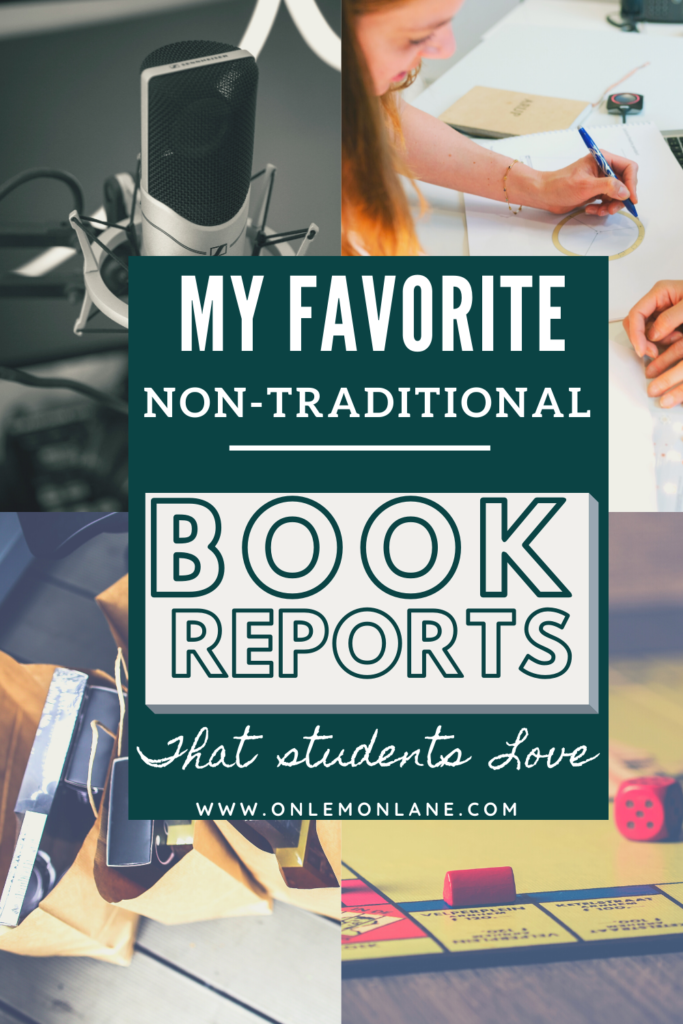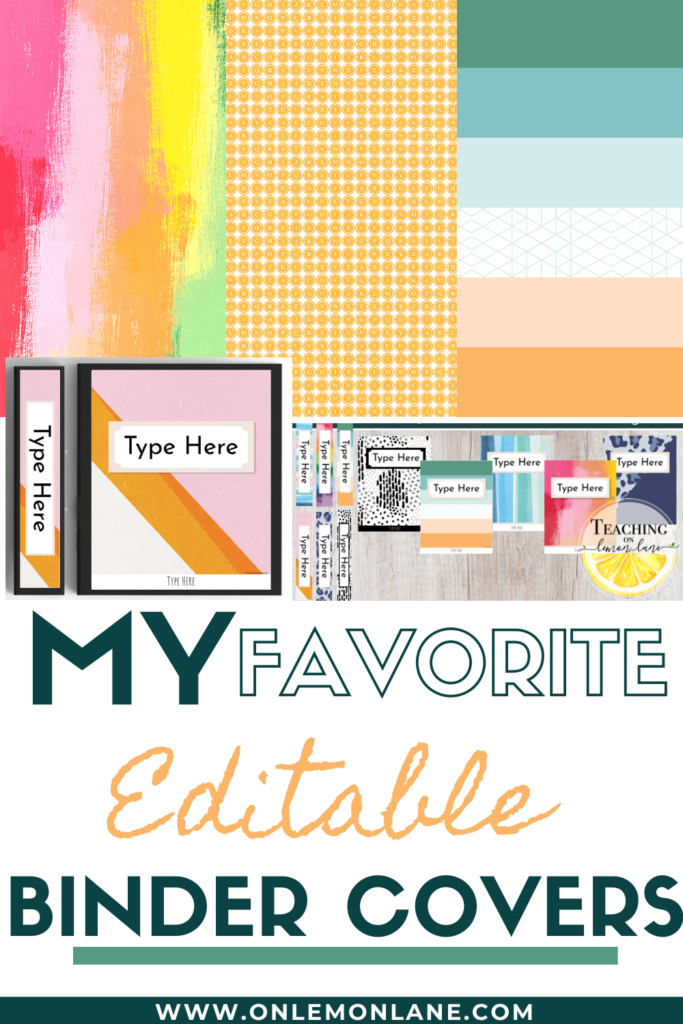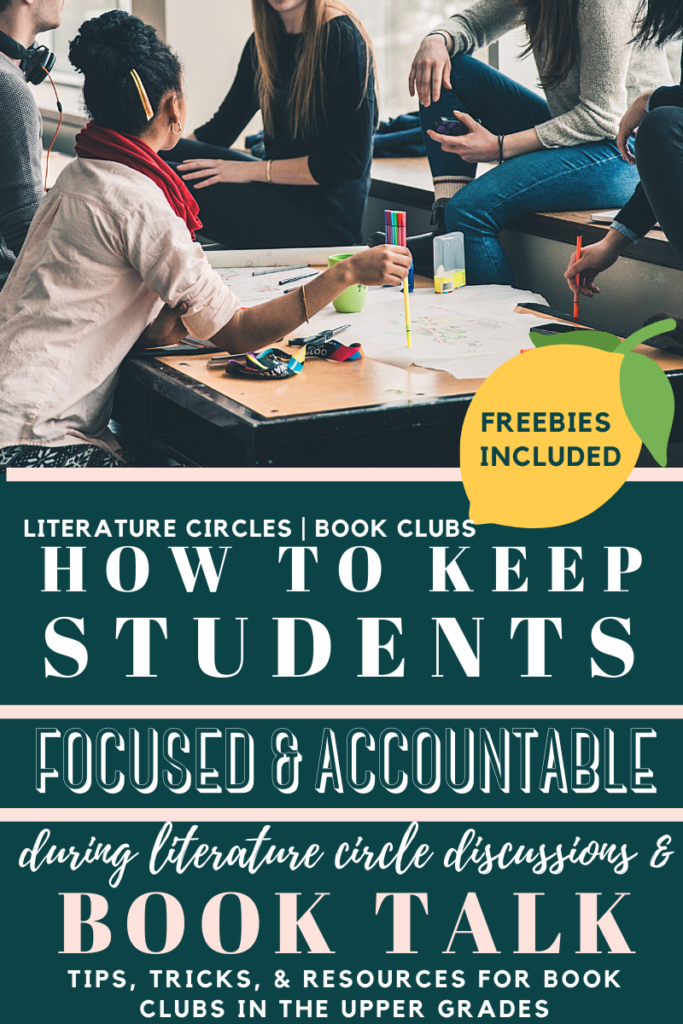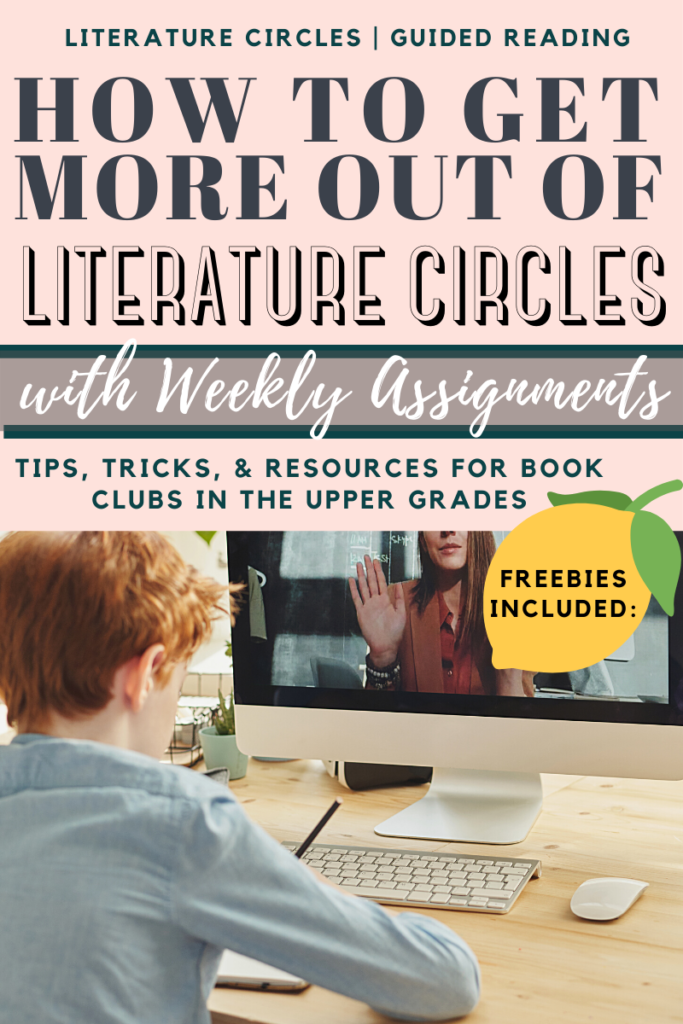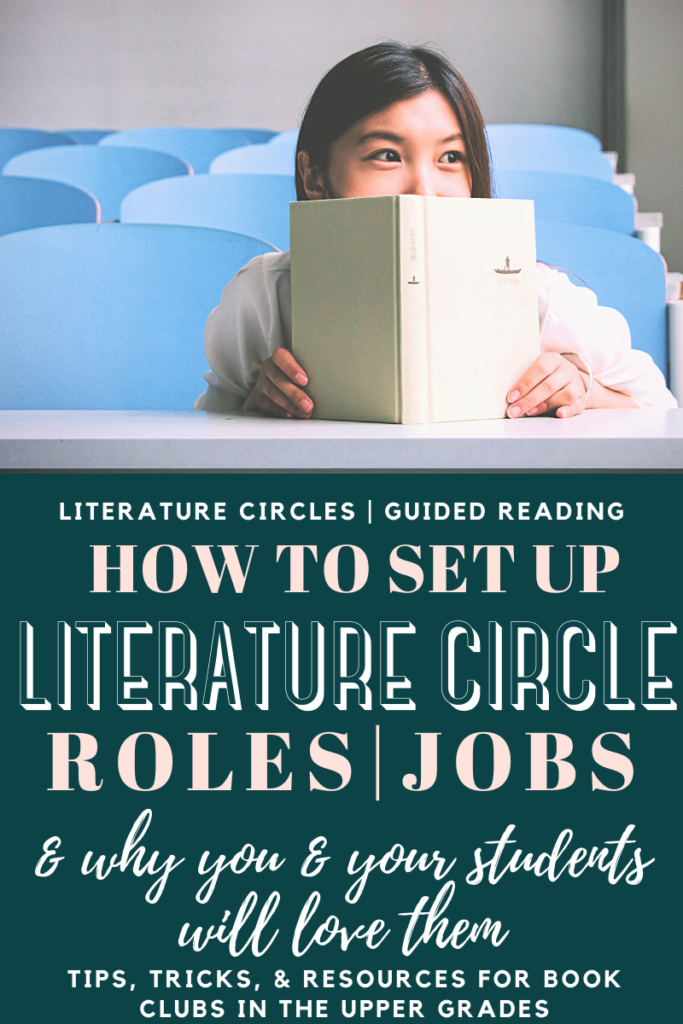
Before we jump into setting up Literature Circle Roles & Jobs, and why your students will love them, If you haven’t already, make sure to check out these posts as well.
- How to Set Up Literature Circles in the Upper-Grade Classroom
- Steps for Effective & Engaging Literature Circles in the Upper Grades
As a teacher, setting up, planning for, and implementing Literature Circles in my classroom was one of my favorite things to do! Literature Circles were where I felt most confident I could introduce students, especially reluctant readers to the magic of reading. Literature Circles allow for the use of popular novels and absolute classics, all while allowing student choice = motivation + accountability.
Likely, you are not naive to the fact that often Literature Circles started with the best of intentions, can end with a feeling of lackluster. If you haven’t already, make sure to check out my 6 Steps for Effective and Engaging Literature Circles. One of the steps that I found that leads to the magic that can be found in a well-established Literature Circle is to create meaningful and deliberate roles.
It’s not enough to assign cutey roles|jobs to each student and hope that they will rise to the occasion and their discussions will all of the sudden have the depth you so desperately want them to experience. I firmly believe that nothing independent should be assigned to a student without proper modeling.
If you are looking to establish roles in your literature circles begin with a short whole-class novel, that will allow you and the class to practice first-hand exactly what you will be asking them to do, (on display to their peers.)
Steps for Effectively Implementing Roles in Literature Circles:
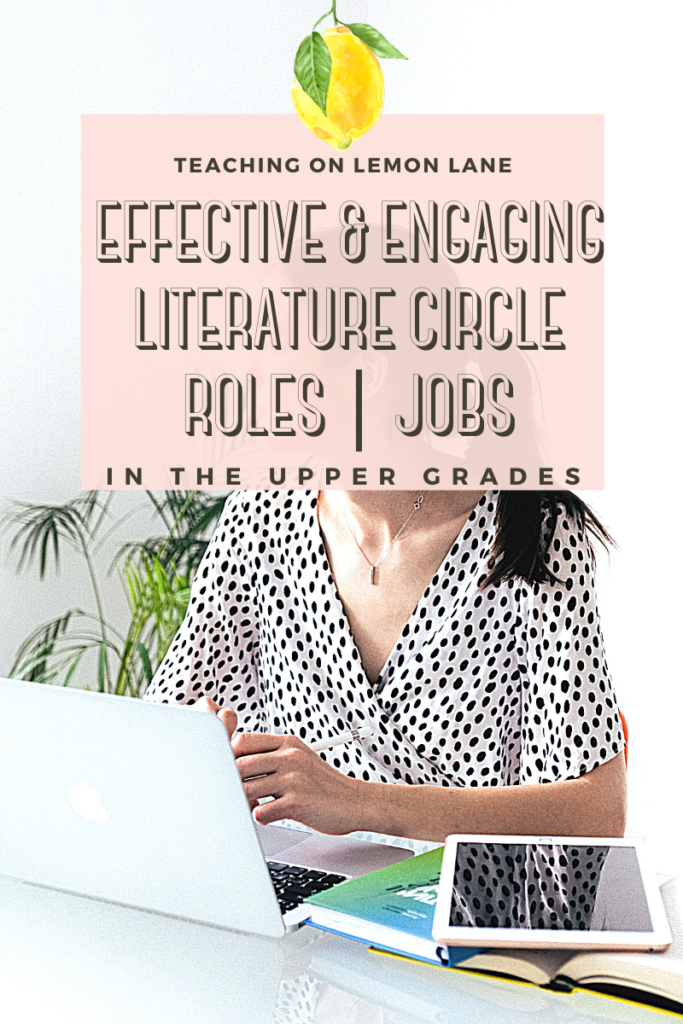 First, consider how long you want the actual literature circle to run, and the maximum amount of students you will allow in each group. In my opinion, 4-6 on both considerations is the sweet spot. Meaning you will need to model 6 literature roles before starting the actual run. (I’ve created 10 different roles that you can switch in and out throughout the school year to keep things fresh and new. Pick from the roles, and decide what you want the students to begin with.
First, consider how long you want the actual literature circle to run, and the maximum amount of students you will allow in each group. In my opinion, 4-6 on both considerations is the sweet spot. Meaning you will need to model 6 literature roles before starting the actual run. (I’ve created 10 different roles that you can switch in and out throughout the school year to keep things fresh and new. Pick from the roles, and decide what you want the students to begin with.
Next, think of what you can use as a whole-class example. If doing digital learning you could try a novel from epic, or check out your school resource library to see what grade level books you have a class set of. ***If you haven’t done this you may consider checking scholastic each month for their Dollar Deals. I was able to get a few class sets of novels at only 1$ per book! Break the book that you will be using to model literature circle roles into how many literature circle roles you will be modeling. If there were 12 chapters and you need to model 6 roles, consider using 2 chapters for each role. You could do also do one chapter together, with lots of support and scaffolding, and then turn the second chapter over to students to complete with a partner or with support from you, reinforcing the same skills covered in that specific literature circle role. ***Bottom line: your objective is to make sure students are comfortable with the literature circle role expectations, and feel confident in meeting the standard you are asking for.
I would model one lesson|literature circle role a day until completed. From there, I would then set-up, divide, and organize the actual literature circles where students will get to experience the literature circle roles independently. If you haven’t already, make sure to check out this blog post: How to Set Up Literature Circles in the Upper-Grade Classroom for more information.
Why Should I Implement Literature Circle Roles?
Couple thoughts, sometimes literature circle roles, or jobs get a bad rap. I’ve seen many that lack the depth and complexity that I feel my students are capable of. I’ve also heard the argument of not implementing roles because educators want their students to do ALL of the roles. To that, I say, “Me too!” That’s the whole point of explicitly teaching students these strategies. You can’t expect a student to meet an expectation unless they know what it is, what it looks like, and what it feels like. By keeping your literature circles focused on skills and strategies you are able to isolate what you want the students to do. Again, it is not enough to have great resources and give them to students only to hope they “get” it. The entire point and end-goal of isolating skills and strategies are that students will begin to naturally do ALL of the roles.
Tips for using Literature Circle Roles in the Classroom:
- I’m all about choice when it comes to literature circles. Student choice creates motivation and accountability that can’t be imitated. I use this same approach when it comes to assigning literature circle roles. Technically, the students have already been introduced to and experienced each role that I wanted them to during the whole-class novel when each role was modeled… Also, by allowing students to choose which role they will complete each week FREES me of having to keep track and come up with a rotation of roles schedule for each group! The only requirements I have are:
- Only one student, per role, per reading assignment (No two the same)
- No repeats during a literature circle run
 With the ever-changing, quickly adapting classroom model I highly suggest using a product that can accommodate both digital and in-class learning. There is great value in establishing familiarity with what you will be assigning to students and what they will be expected to do. Keeping that common thread whether students are in class with you or in their own home prevents a lot of confusion and anxiety. This simple step also simplifies your workload 10-fold. I will link the products I created below. Every Literature Circle product includes the printable version as well as a digital version that can be used in a distance-learning classroom.
With the ever-changing, quickly adapting classroom model I highly suggest using a product that can accommodate both digital and in-class learning. There is great value in establishing familiarity with what you will be assigning to students and what they will be expected to do. Keeping that common thread whether students are in class with you or in their own home prevents a lot of confusion and anxiety. This simple step also simplifies your workload 10-fold. I will link the products I created below. Every Literature Circle product includes the printable version as well as a digital version that can be used in a distance-learning classroom. - The crowning point of literature circle roles should take place in the group discussion, this is where the discussion should come alive with the students excited to share their thinking. Roles are a great way to scaffold and support their discussions. Each student comes prepared and has something to contribute. Allow students time to also have free-talk. Free-talk is where students can talk about anything ABOUT the book. The only rule is that they must stay on topic. With 5th graders anywhere from 3-5 minutes were plenty, however, it’s during that time we are allowing students to practice and explore the skills they are practicing. To learn more about how I scaffold or support student discussions in literature circles, click here.
- Allow students to discuss their roles and findings with other groups reading different books. I would group my literature circle runs by a commonality. This allowed there to be a central theme that all students could relate to, despite all reading different books. Discussion from members that completed the same role for different books also lead to interesting discussion and perspectives. Especially when you task them to find something in common with the books they are reading. This can also be done as a whole-class discussion when you come back together, after group discussions.
- Reward depth in a discussion with recognition. While students are meeting and discussing the reading in their groups, go around, listen, and participate. Take notes of notable discussion moments, and when you return as a whole class, share those moments! Ask students to share their own highlights from their group’s discussion. This simple practice will reinforce the skill you want students to execute!
- As mentioned I have created 10 literature circle roles. Because all of the text is editable, you can edit the roles to your own classroom needs, even simplifying the tasks or adding depth if necessary. Introduce other roles into your literature circle runs as you go. Students get excited, and it’s a fun way to change things up!
***Remember to model each new role before implementing the activity in a literature circle run.
Tips for Going Digital or Setting Up Roles in A Distance Learning or Hybrid Classroom
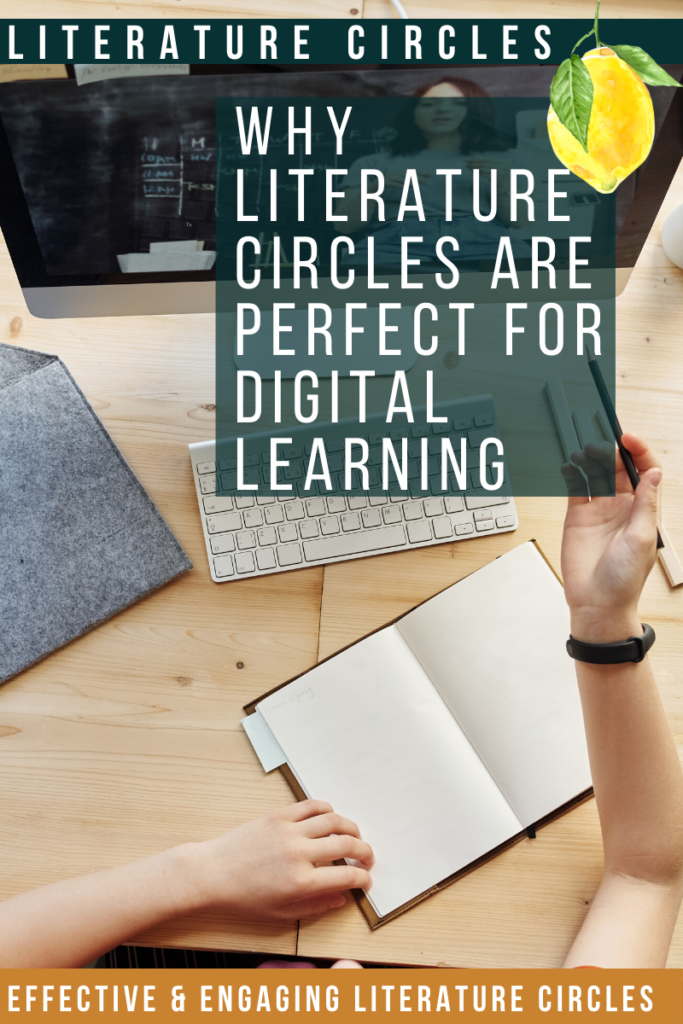 As previously mentioned, begin by using resources|roles that can easily adapt to any classroom environment, including digital.
As previously mentioned, begin by using resources|roles that can easily adapt to any classroom environment, including digital.- Zoom, Google Meet, and Flip Grid are great FREE resources that make it easy to implement Literature Circles Digitally.
- Benefits to Zoom: Zoom is a video conferencing tool that allows you to meet with your students in real-time. Zoom offers breakout rooms which are PERFECT for your Literature Circle Groups to meet and discuss the weekly reading. This “live” time is also a nice way to partially meet the social needs of your students. Essentially you would begin the conference call as a whole class, and then students would divide into their breakout rooms to discuss their roles and the reading as a group. Click here for more information on breakout rooms.
- Benefits to Google Meet: Google Meet is another video conferencing tool that is wonderful for distance learning. Because it’s through Google the integrations between Google Classroom and Google Meet are pretty seamless. If using Google Meet, you will have to separate “Google Meets” for each group to use, instead of meeting as a whole class first and then breaking off while staying on the same call. Head here for more information on Google Meet.
- Benefits to Flip Grid: Flip Grid is a video response tool. Instead of meeting live, during a conference call, students would instead have the option of creating a video of themselves responding to the reading and posting it to their group’s discussion board. From there, students can interact, like, and comment on each other’s Flip Grid Videos. This is a great alternative if students are unable to attend a scheduled conference call. This blog post offers more information.
- Go COMPLETELY Digital with EBooks and Digital Passages. I’ll be the first to admit I’m all for getting a real, old-fashioned, concrete book in your student’s hand. However, I’ll also be the first to admit that it may not be an option at times. With all the resources available to teachers in the form of Ebooks, don’t stress for one second, you have thousands of quality E-books and classics at your disposal many of them are even Free. Check out this list for more information!
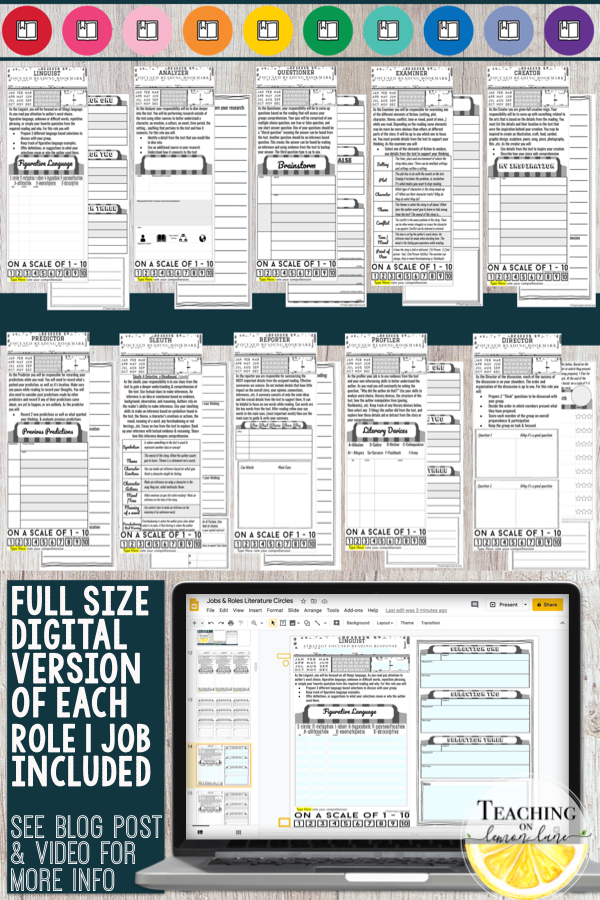 Literature Circle Roles | Jobs Resources:
Literature Circle Roles | Jobs Resources:
This product can be used and implemented in grades as young as Upper elementary looking to study chapter books or novels, to your middle school upper grades and High School Students. All text is editable so you can completely customize the roles | jobs to your classroom’s needs.
These Literature Circle Role, Reading Response Bookmarks were created to be used as a weekly assignment in my Literature Circle Groups. Because of the shift in learning and the need for effective digital products in the distance learning classroom I’ve also added a full-size Digital, Literature-Circle Role Response page that can be edited through Google Slides and easily assigned in Google Classroom.
Literature Circle Roles Included:
Watch the video above for a full preview of what’s included in the Literature Circles Roles|Jobs Bundle
Click Here to Purchase on Teachers Pay Teachers
Save BIG and BUNDLE
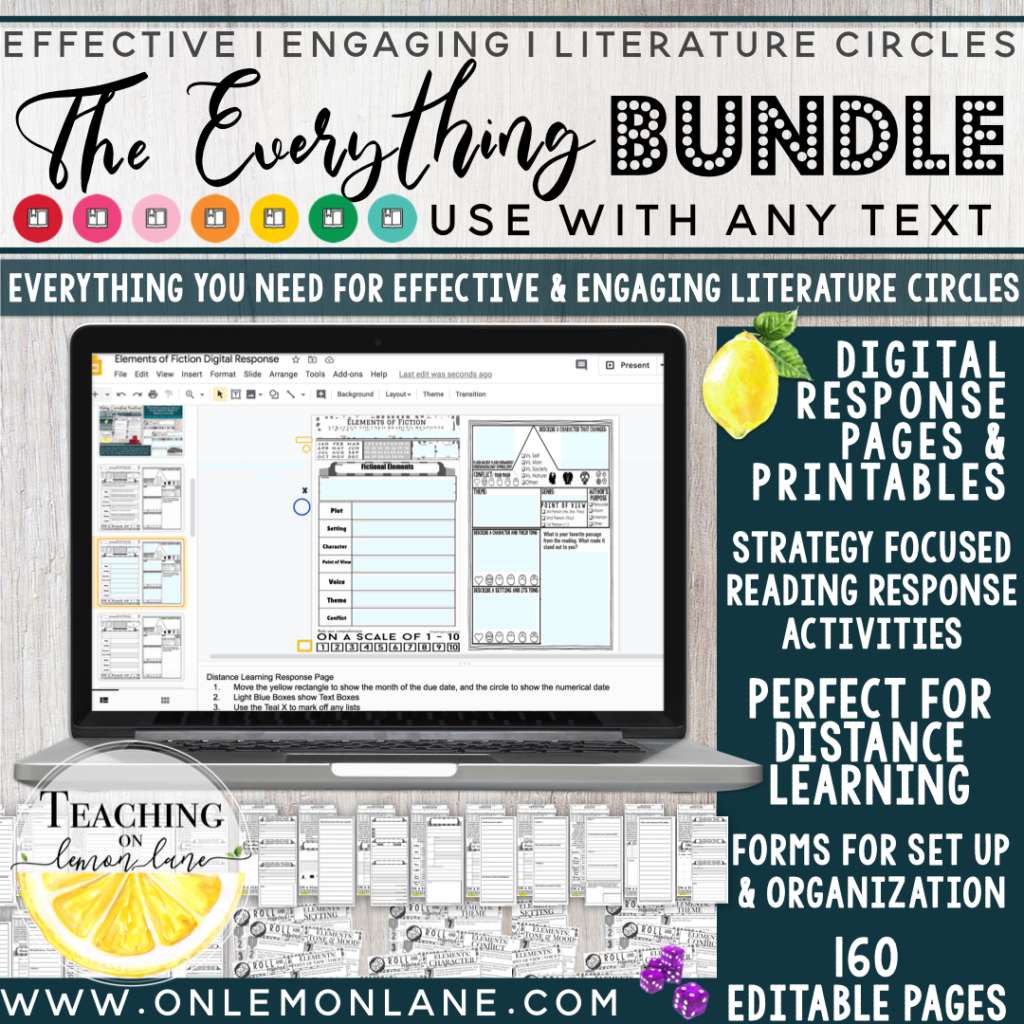
The EVERYTHING Bundle: Best Value
Click Here to Purchase on Teachers Pay Teachers
Learn More:
Related Blog Posts and Products
Stay in the loop, let’s connect!

To stay up-to-date on new blog posts, freebies, exclusive promo codes, and sales… Join the Teaching on Lemon Lane Community! Pick any or all of the following to stay in the loop of all things Teaching on Lemon Lane.
- Follow @TeachingonlemonLane on Instagram
- Like Teaching on Lemon Lane on Facebook
- Join our exclusive Teaching on Lemon Lane Facebook Group
- Sign-Up for our Monthly Newsletter: No Spam, only make your life easy-peasy, lemon-squeezy goodness… Promise.
If you enjoyed this PLEASE SHARE! Sharing on Pinterest, Facebook, or tagging on Instagram is a simple, yet wonderful way to support the efforts of Teaching on Lemon Lane!



